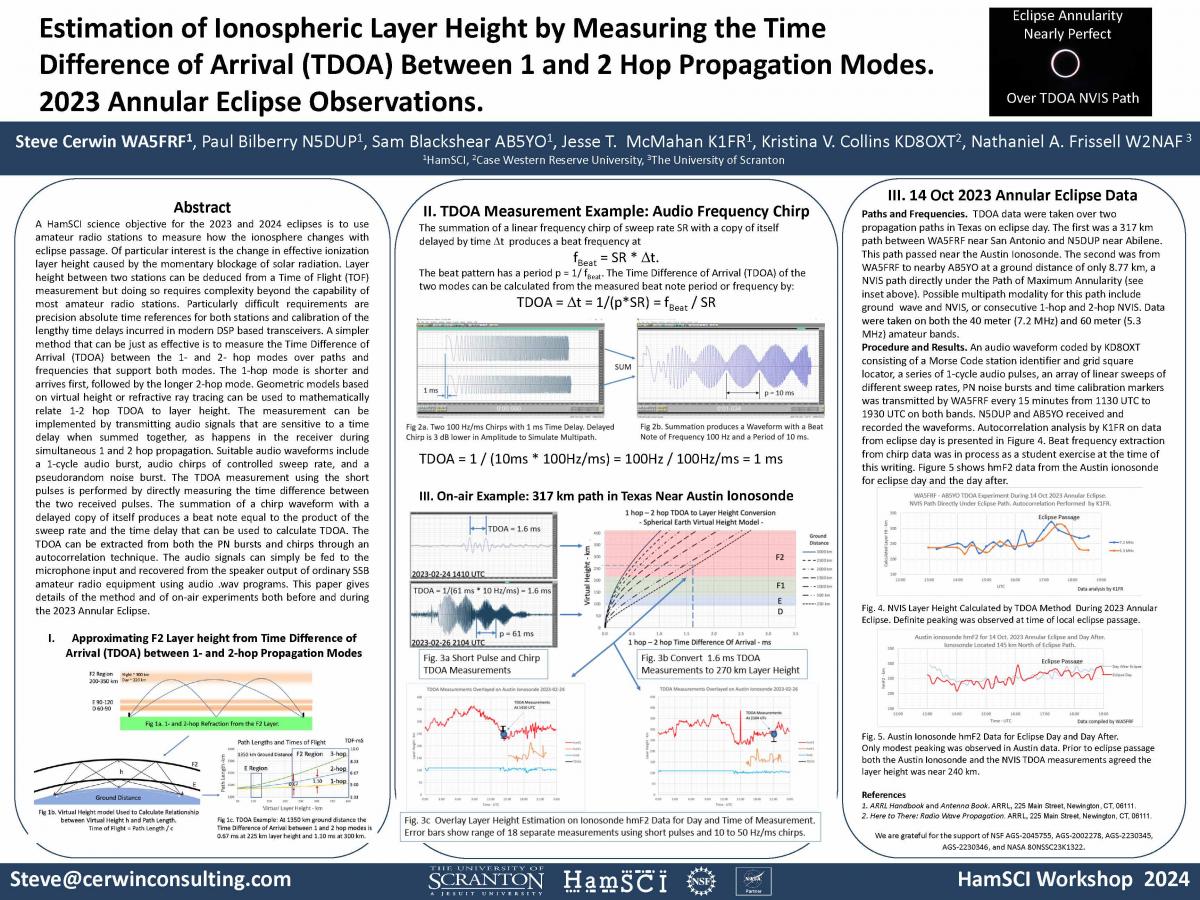| Title | Estimation of Ionospheric Layer Height by Measuring the Time Difference of Arrival (TDOA) Between 1 and 2 Hop Propagation Modes. 2023 Annular Eclipse Observations |
| Publication Type | Conference Proceedings |
| Year of Conference | 2024 |
| Authors | Cerwin, SA, Bilberry, P, Blackshear, S, McMahan, JT, Collins, KV, Frissell, NA |
| Conference Name | HamSCI Workshop 2024 |
| Date Published | 03/2024 |
| Publisher | HamSCI |
| Conference Location | Cleveland, OH |
| Abstract | A HamSCI science objective for the 2023 and 2024 eclipses is to use amateur radio stations to measure how the ionosphere changes with eclipse passage. Of particular interest is the change in effective ionization layer height caused by the momentary blockage of solar radiation. Layer height between two stations can be deduced from a Time of Flight (TOF) measurement but doing so requires complexity beyond the capability of most amateur radio stations. Particularly difficult requirements are precision absolute time references for both stations and calibration of the lengthy time delays incurred in modern DSP based transceivers. A simpler method that can be just as effective is to measure the Time Difference of Arrival (TDOA) between the 1- and 2- hop modes over paths and frequencies that support both modes. The 1-hop mode is shorter and arrives first, followed by the longer 2-hop mode. Geometric models based on virtual height or refractive ray tracing can be used to mathematically relate 1-2 hop TDOA to layer height. The measurement can be implemented by transmitting audio signals that are sensitive to a time delay when summed together, as happens in the receiver during simultaneous 1 and 2 hop propagation. Suitable audio waveforms include a 1-cycle audio burst, audio chirps of controlled sweep rate, and a pseudorandom noise burst. The TDOA measurement using the short pulses is performed by directly measuring the time difference between the two received pulses. The summation of a chirp waveform with a delayed copy of itself produces a beat note equal to the product of the sweep rate and the time delay that can be used to calculate TDOA. The TDOA can be extracted from both the PN bursts and chirps through an autocorrelation technique. The audio signals can simply be fed to the microphone input and recovered from the speaker output of ordinary SSB amateur radio equipment using audio .wav programs. This paper gives details of the method and of on-air experiments both before and during the 2023 Annular Eclipse. |
| Refereed Designation | Non-Refereed |
| Full Text |

